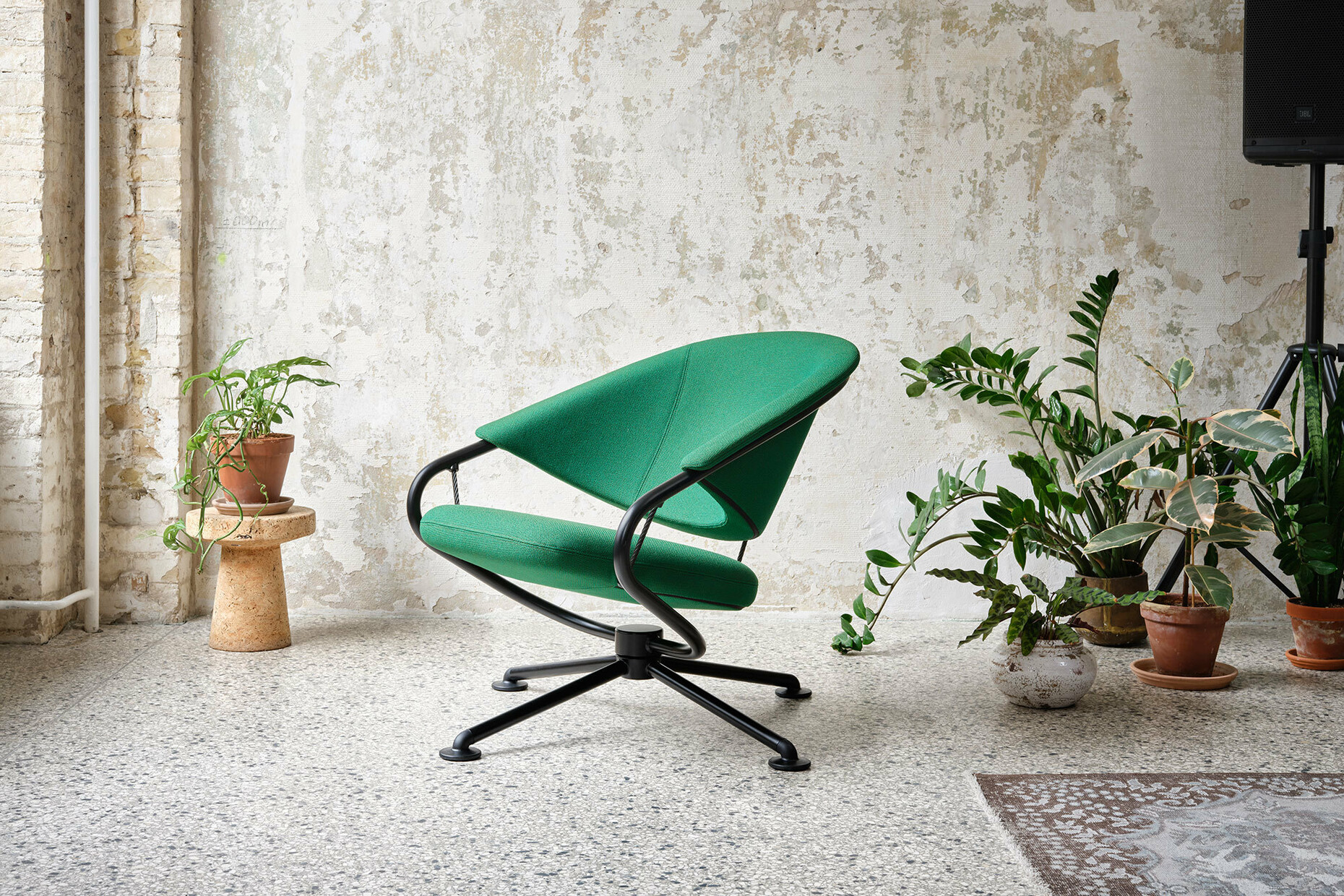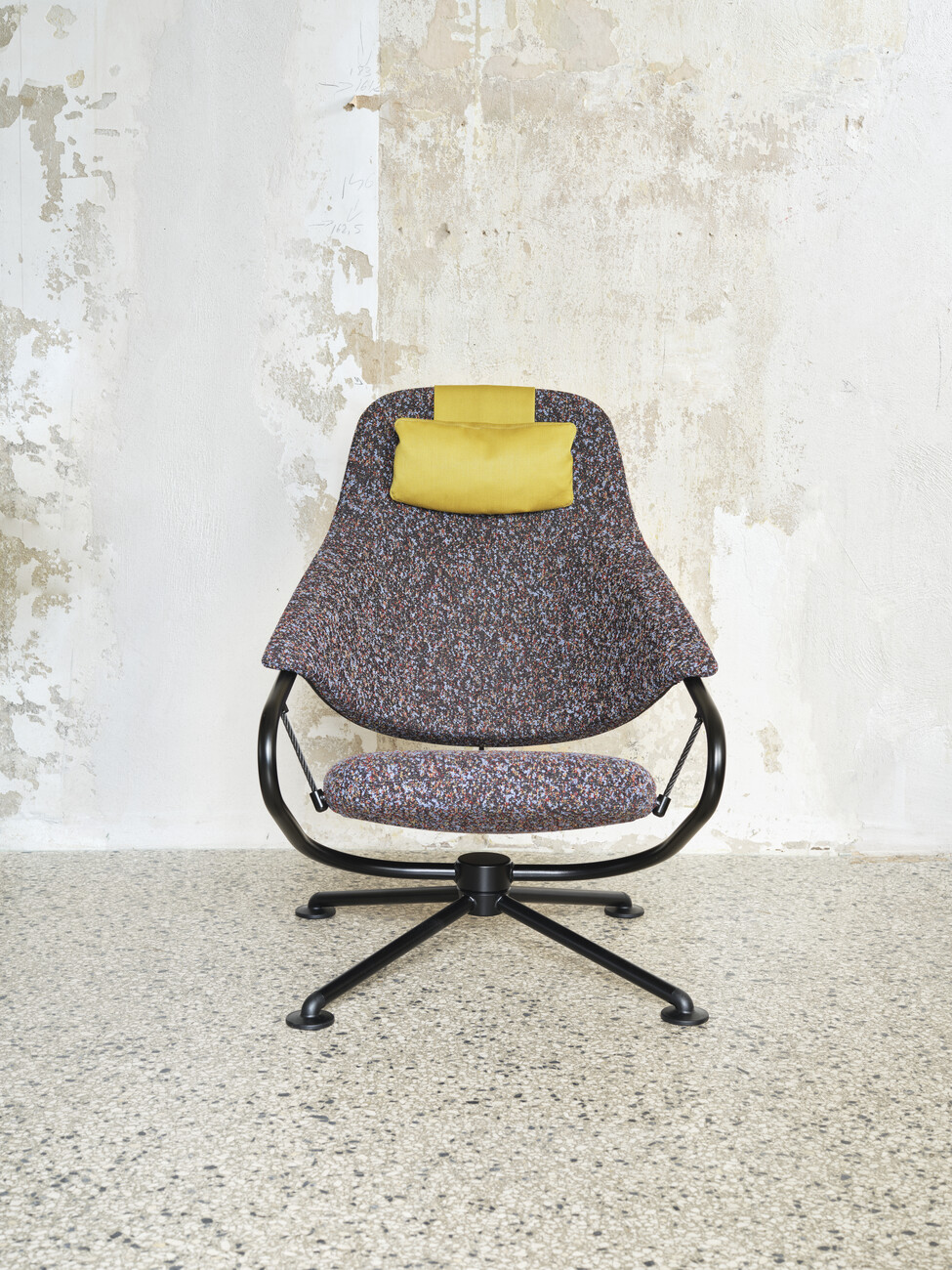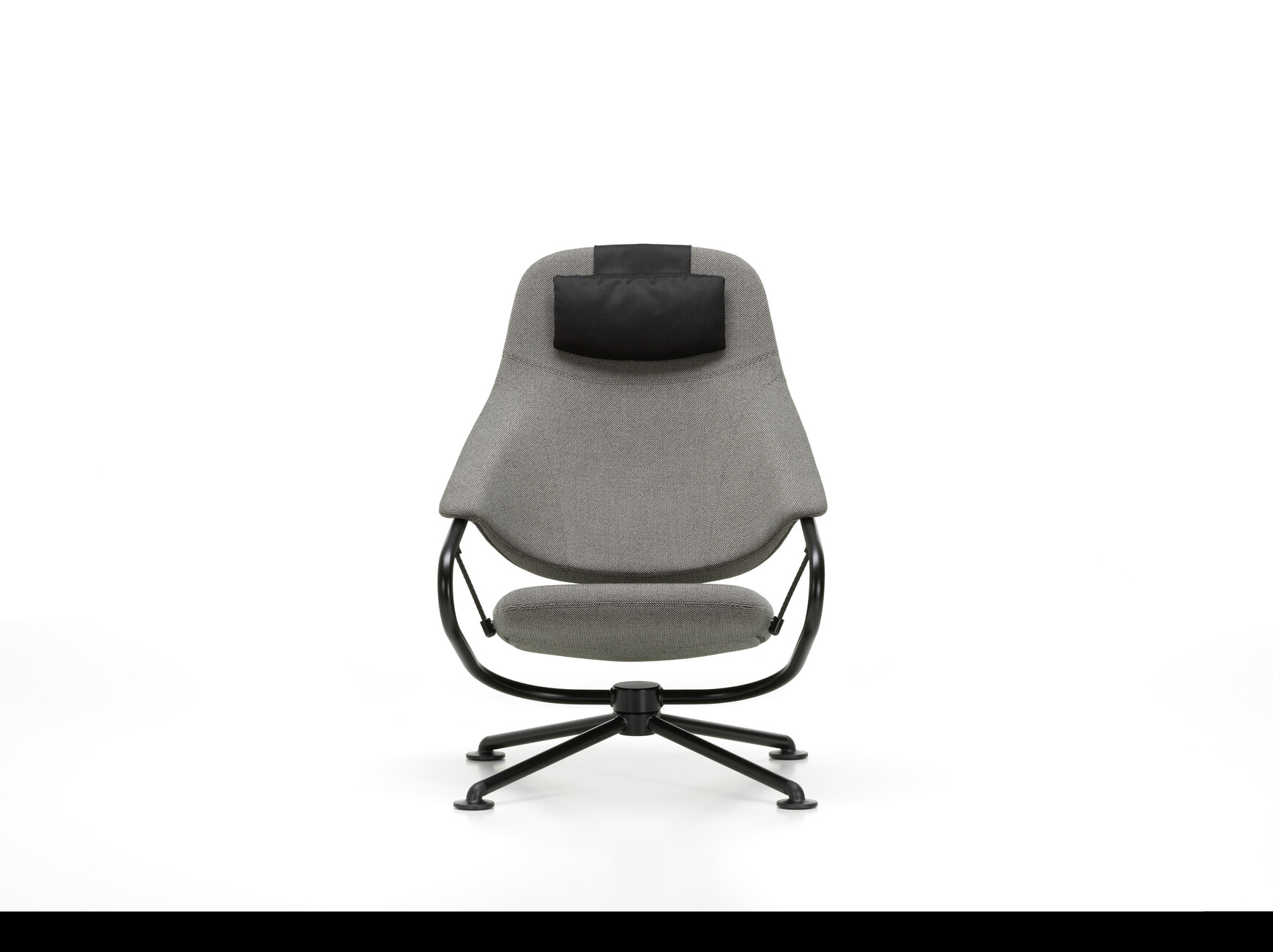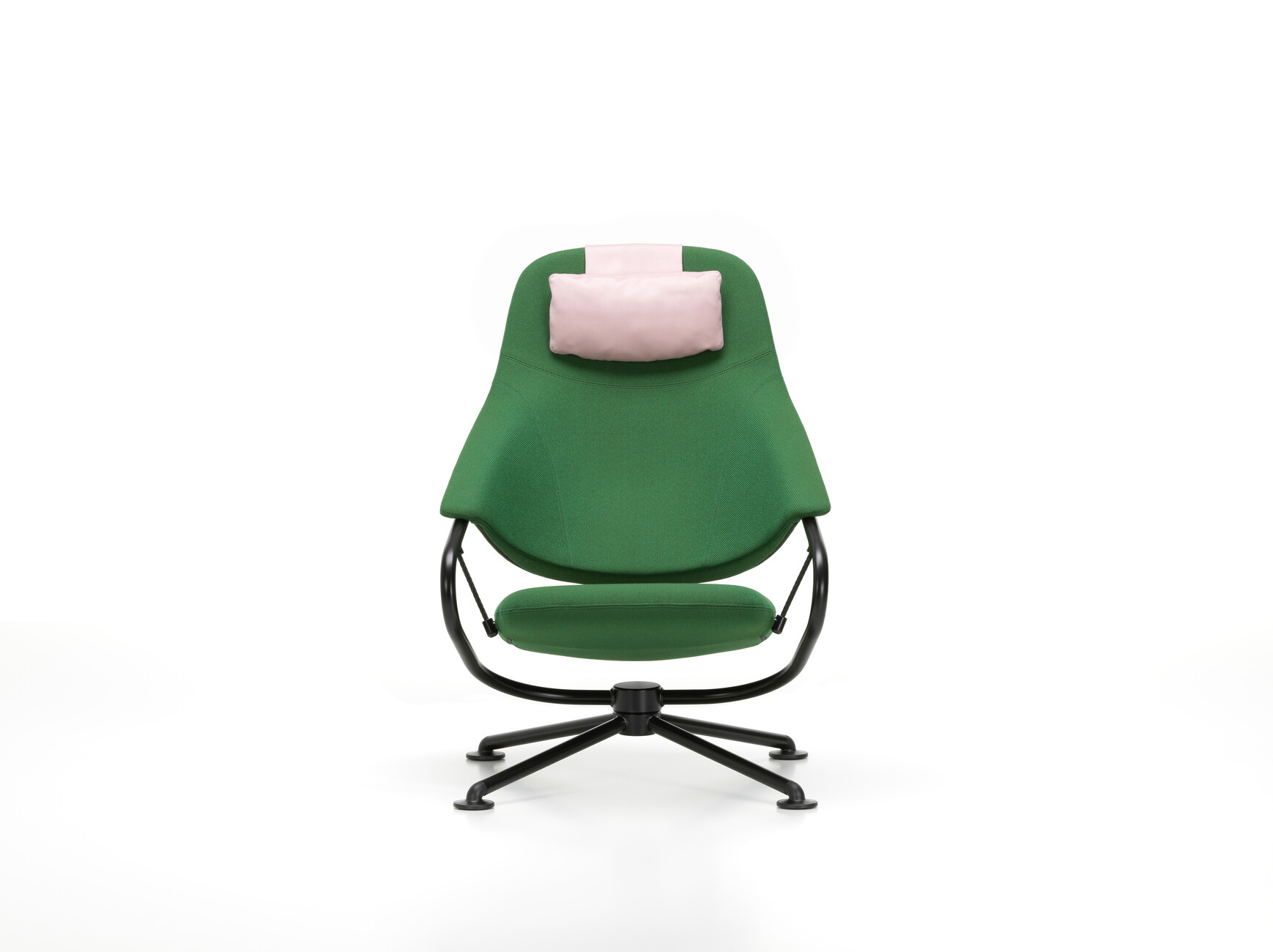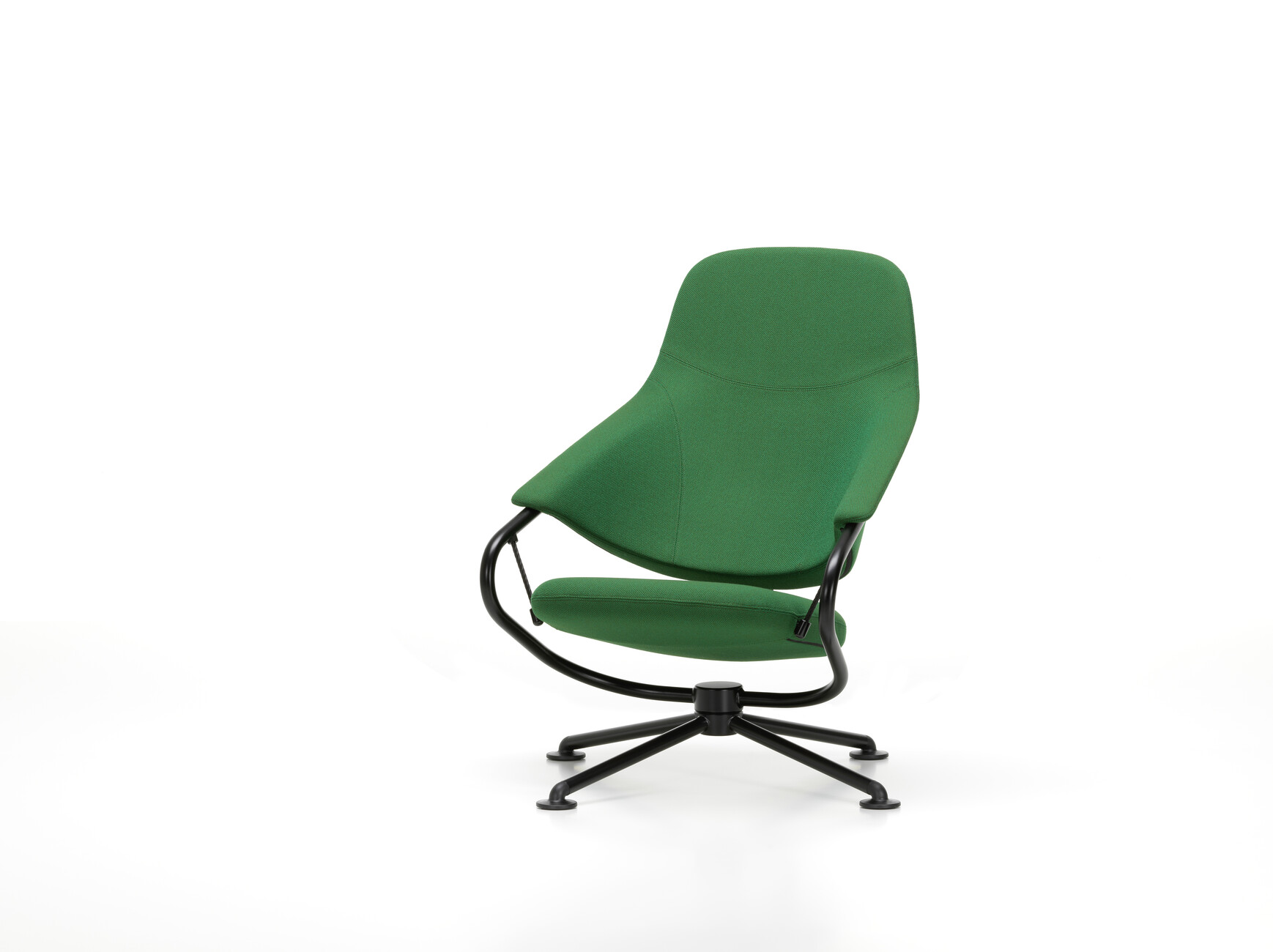“The steel cable does everything for us.”
Thomas Edelmann: Your new “Citizen” lounge chair is related to earlier projects for Vitra. Specifically, it resorts to components and ideas from “Waver”, an expansive garden armchair. Why?
Konstantin Grcic: "Landen" for the Vitra Edition was my first product for Vitra, designed back in 2007. In a broader sense, back then the focus was on furniture for the public space, furniture without a fixed typology. For me, it was an experiment, one associated with the hope that I would be able to go on working for Vitra and developing products for the company. In the following four years, various ideas for outdoor furniture were developed, but finally only one product was launched on the market, the "Waver" armchair. I liked the chair, whose textile seat shell was suspended at four points in a free-swinging tubular frame. Unfortunately, "Waver" did not work commercially, which always has many reasons. Although it was taken out of production again after a few years, I kept returning to the basic principle of "Waver" in discussions with Eckart Maise, who was head of the development department at the time. ‘What a shame’, we said, now there was an idea with a lot of potential, but we had not captured it yet with “Waver”. And so we began to work on a new interpretation of the original idea.
That’s unusual as the focus here is not on nurturing a product, but on a new object with a changed context, yet one that does not deny having a precursor. What in “Citizen” actually still stems from “Waver”?
Konstantin Grcic: We brought the furniture from outside to inside. While it may sound very simple to just adopt the initial idea for a lounge chair, the route to getting there was extremely difficult. Either we were sticking too close to “Waver” – and then there was no point in the new development. Or we moved too far away from it. We therefore decided to try things out in individual steps; some things we then jettisoned, but we nevertheless gradually made progress.
What was retained?
Konstantin Grcic: The basic idea of a frame structure with suspended seat remained. Then there’s the characteristic tubular frame, the rotatable base frame with the large paws that were intended for outdoor use but also function indoors …
... but everything above the frame has changed?
Konstantin Grcic: Thanks to its bend, the tubular frame has a slight cantilever effect, a mobility in the structure. At the same time, the frame encapsulates a spacious seat. In the case of "Waver" one sat in a seat sewn from canvas, which was suspended freely swinging at the shoulders and the two front corners at the tubular frame. In the new armchair, the seat and back are separated. They each follow their own logic. The back shell, which is available in two different versions - high and low - is upholstered and fixed to the frame. The seat is suspended from the frame and can swing. In the course of development, there were various thought models and options as to how best to implement this. After some detours - or rather empirical work - we finally came up with the solution with the three steel cables. They allow smooth, free movement in all directions.
The steel cables provide mobility and also encourage users to trust the structure.
Konstantin Grcic: The movement that arises is interesting. Since the backrest is fixed, it takes place below the torso. Now this is an subtile way of moving to find the right position. It has nothing of a rocking chair about it. Rather, there are those tiny corrections to my movements that I tend to make subconsciously, and yet find pleasant, good. The steel cables are dimensioned in such a way that they not only support the structure but also give it a certain stability. The ropes work like a spring that constrains the movement, albeit not as with a mechanical lock. It is no doubt quite radical to expose the cable to openly. We discussed this at great length. What’s great is that it does all function.
In the case of “Waver” textile bands and canvas alluded to sports such as windsurfing and paragliding. By contrast, the steel cable and the upholstery make “Citizen” seem heavier.
Konstantin Grcic: By bringing it in from outdoors we have turned it from a chair into a lounge chair. With this label we all associate completely different references. Actually, “Citizen” is very light compared to a traditional lounge chair. Since we have opted for an exposed structure, the shape is dissolved, something quite unusual for this typology. What was important was to strike the right balance to ensure that the armchair is clearly legible as a lounge chair and in terms of seating feel fulfils people’s corresponding expectations to a T. While those expectations are met while sitting, “Citizen” parts company with the classic shape, with expectations as regards materiality. The open tube and most definitely the steel cable are, after all, elements, which are unknown in the rather conservative world of lounge chairs. Nevertheless, "Citizen" is not furniture that wants to irritate.
There are many possible references that come to mind. In the case of “Waver” it was a butterfly chair, while we would probably now think of Eero Saarinen’s “Womb” chair when it came to describing the relationship of frame and shell.
Konstantin Grcic: I would add Franco Albini and Franca Helg. Their “Tre Pezzi” armchair was not a role model for me during the development work but when we looked at our prototype we discerned certain affiliations: “Tre Pezzi” likewise boasts a tubular steel structure, but it is static. The three separate upholstery elements are each attached to the tubular frame. Meaning there are parallels and major differences.
What’s the special side to developing a chair together with Vitra?
Konstantin Grcic: For each of the companies I work for there are specific motives and themes that run like a red thread through the joint undertaking. Among all my clients, Vitra is the one with the greatest range of opportunities when it comes to engineering and quality. Some strange mechanism in me persuades me nevertheless not to emphasize that technological approach. I find myself thinking: ‘Show Vitra that it can be done differently.’ That invariably leads to discussions that are important for the final outcome. Antonio Citterio made “Grand Repos” with Vitra. It features an invisible synchronizing mechanism. Parallel to it, in the guise of “Citizen” there is now something quite different. You can solve things more simply – with one and the same company! We achieve complex movements with three steel cables. We just have to work out how to suspend those cables correctly. And then the steel cable does everything we need. I like that simplicity. It would not have been possible without the Vitra engineering. I could quip that I try to work against the grain of the typical Vitra solution, where injection-molded parts always take the front seat. That said, the simple variant requires easily as much precision and development effort.
What are the discussions involved like?
Konstantin Grcic: Rolf Fehlbaum and I discussed the topic of tubular steel at great length back then with “Waver” – and so we did again with “Citizen”. To my mind, it is the material with which modern industrially-manufactured furniture was invented. Which is why it seemed obvious to me to use it to build a lounge chair and to show it in the process. Initially, Fehlbaum was skeptical. He argued that the use of tubular steel would inevitably leave us somehow immersed in history. But that was definitely not what I had in mind. I associate tubular steel with a specific economic approach, and an outlook that simply fits furniture. Which is why I like it.
Items of furniture also have a temporal dimension. “Waver” arose a little less than ten years ago. What was relevant a decade ago? What’s new, what’s the challenge today? If Rolf Fehlbaum considers tubular steel too historical, then what is it that is now contemporary?
Konstantin Grcic: There’s no real simple answer to that. I feel the world of furniture moves very slowly. Ten years are a short period in it. Nevertheless, ten years ago Vitra would not have yet been in a place where it would have floated a lounge chair like “Citizen” on the market. And not because of the technology required, but because of the look: In “Citizen”, you can see the welded seams, it’s made of tubular steel, has thick steel cables that are likewise visible, and feet that have been lifted from garden furniture. Today, a Vitra product can have such an appearance because what we are accustomed to seeing has changed as well as Vitra has changed. Most people do not care all that much about conventions. They want furniture for a specific task. Chrome, beautiful cast parts, or a perfect double-seam in leather are status symbols that are today often of no consequence at all. People are looking for furniture that meets specific needs - and these needs are constantly changing.
